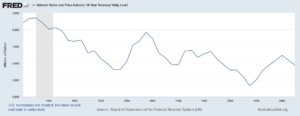Article • Dean Baker’s Beat the Press
National Public Radio Makes Stuff Up to Tell a Story About Interest Rates and Budget Deficits

Article • Dean Baker’s Beat the Press
Fact-based, data-driven research and analysis to advance democratic debate on vital issues shaping people’s lives.
Center for Economic and Policy Research
1611 Connecticut Ave. NW
Suite 400
Washington, DC 20009
Tel: 202-293-5380
Fax: 202-588-1356
https://cepr.net
A story on All Things Considered last night told listeners:
“In the early ’90s, President Bill Clinton’s administration was troubled by this looming problem. Year after year, both government deficits and interest rates were going up. Here’s one of his top economic advisers, Laura Tyson.
“LAURA TYSON: ‘And then he said, oh, my goodness, if we don’t get a hold of this federal deficit going forward, then those rates will continue upward. That was a very significant concern.’”
That’s actually not what happened in the early 1990s when Bill Clinton was president. Here’s the picture for the interest rate on 10-year Treasury bonds.

As can be seen, interest rates were falling sharply through the whole period from the third quarter of 1990 to the fourth quarter of 1993. Bill Clinton passed his big deficit reduction package in the third quarter of 1993. Interest rates did start to rise in 1994, but the most obvious explanation was that Alan Greenspan began raising short-term interest rates, as the unemployment rate was falling towards the 6.0 percent range, the level at the time generally believed by economists to be the non-accelerating inflation rate of unemployment. (He raised the overnight interest rate from 3.0 percent to 6.0 percent between February of 1994 and March of 2005.)
Budget deficits were actually falling through this whole period, so the link between rising budget deficits and rising interest rates told in this piece is completely at odds with the data.